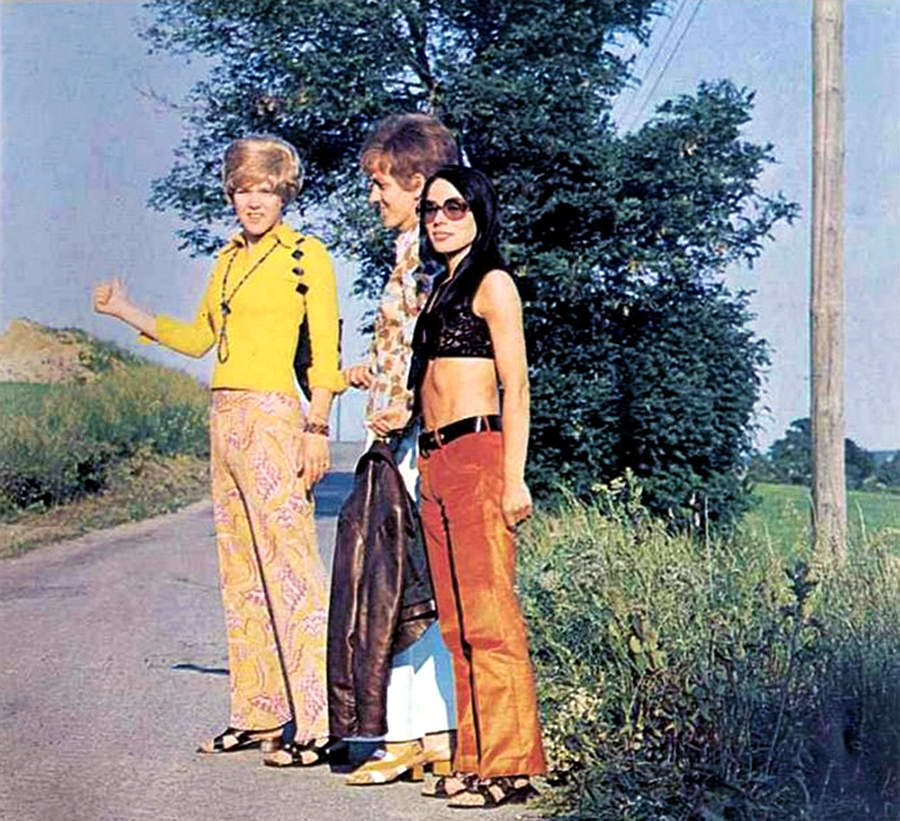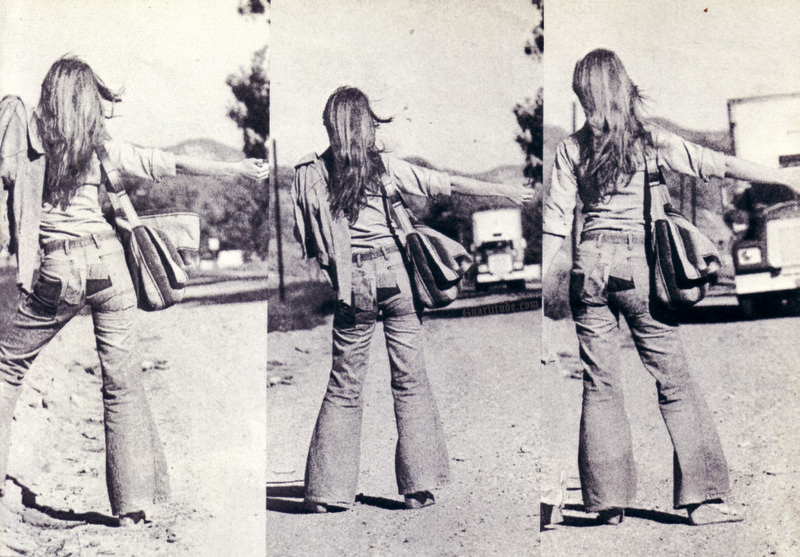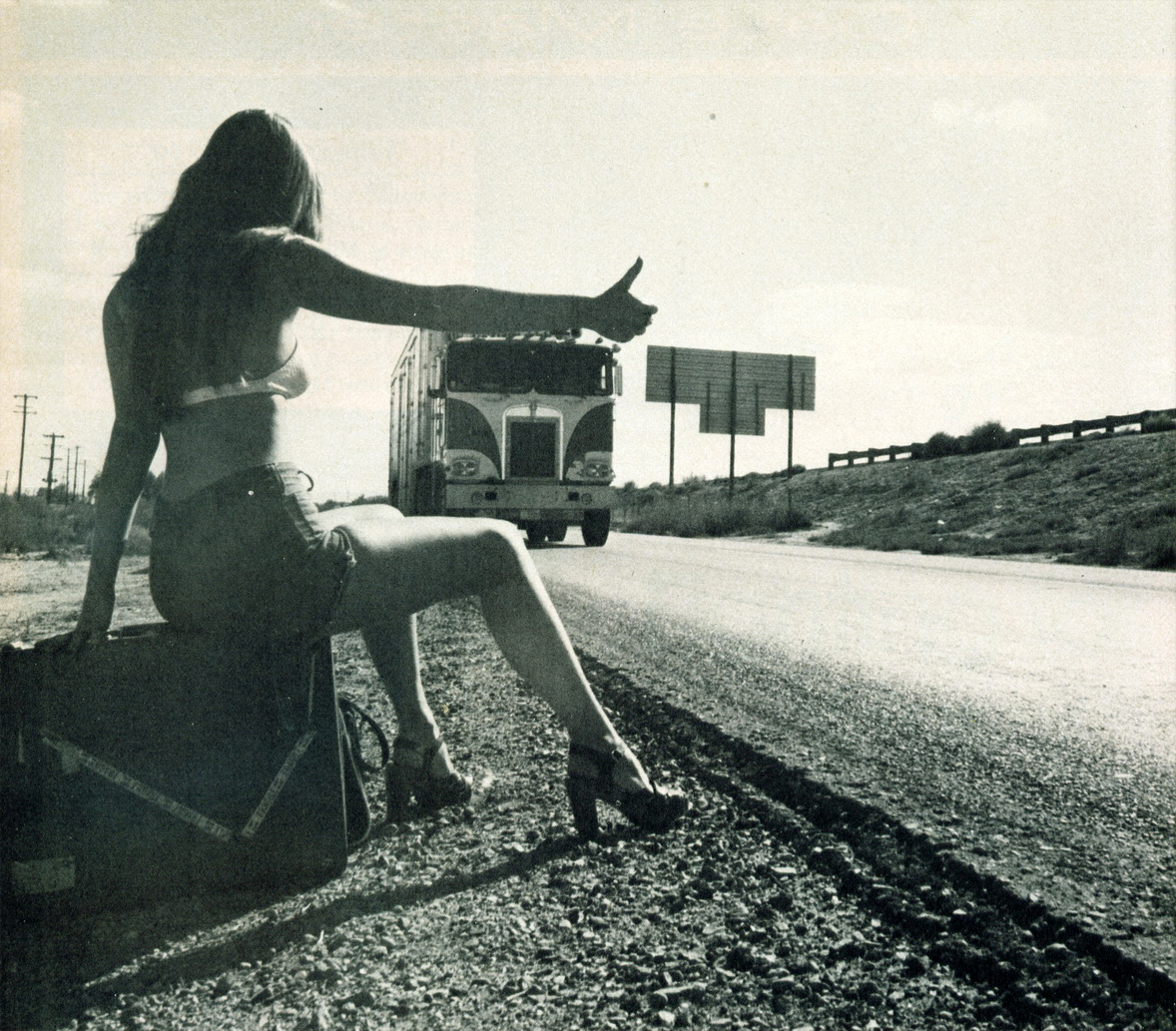
The idea of a female hopping into a random stranger’s car is so foreign to today, that it almost seems impossible that a world existed where this was actually a thing. It likely was never actually a safe practice for females, but was a highly popular means of transport for girls in the hippy era.
By the late sixties, it started to be recognized as a not-so-healthy exercise for ladies. Below are a couple articles which highlight the growing awareness that this fad may not be the best idea ever. Also presented are some images of female hitch-hiker ephemera from the period….
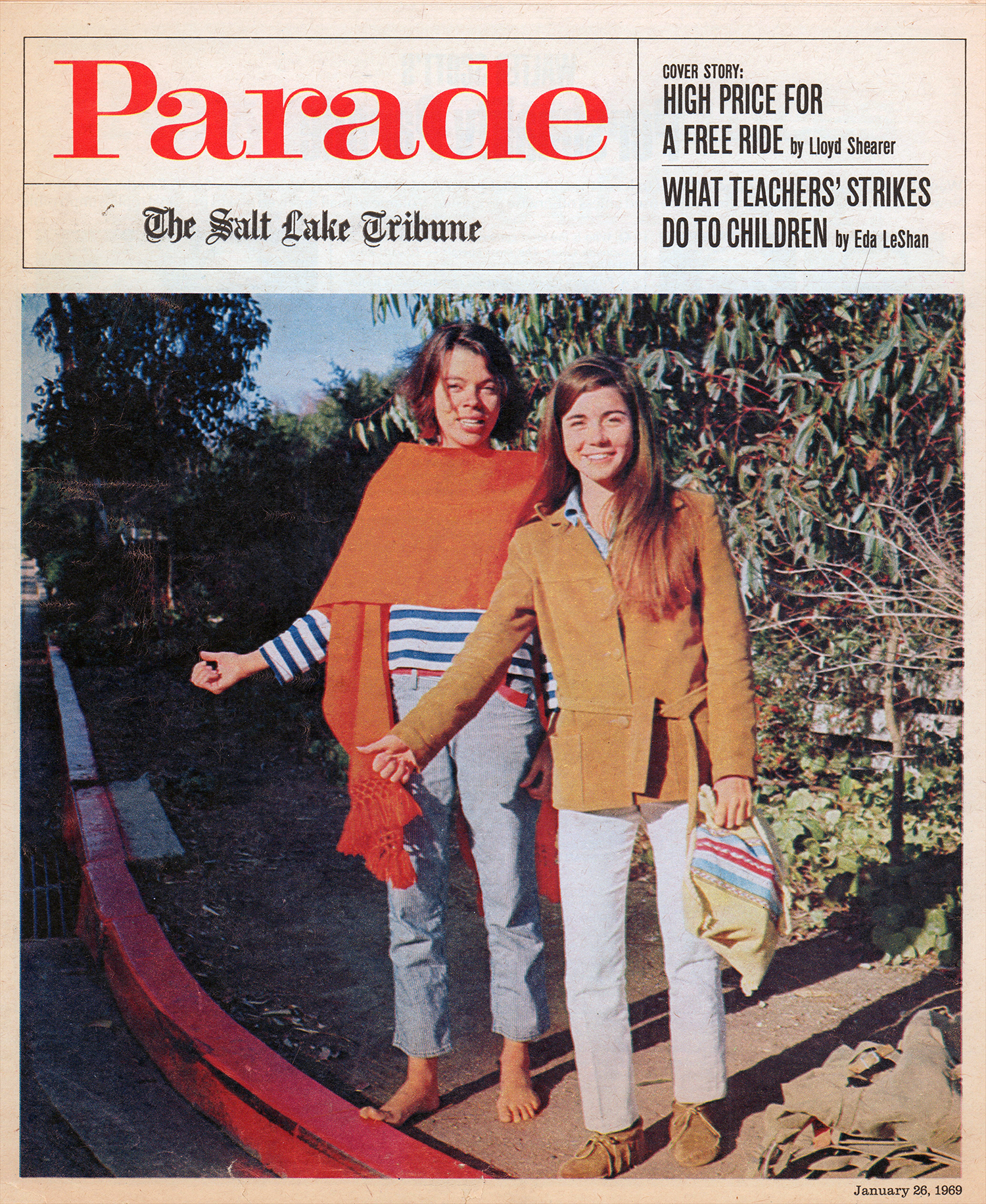
First, an article in Parade Magazine (February 26, 1969) titled “Death or Assault: The Price of a Free Ride” by Lloyd Shearer is particularly interesting. (The full pages are below.)
In Santa Monica, a suburb of Los Angeles, one police official estimates that half of his rape cases involve girls who voluntarily enter the rapist ‘s vehicle. California highway officials estimate that for each hitchhiker rape reported, there are ten they never hear about.
Who are the participants in this now fashionably popular, high-risk sport? Unlike traditional hitchhikers and ride-thumbers of the Depression days, who were primarily men down on their financial luck or job-hunting transients, these are girls with money in their pockets.
According to the police, they are high school or college students from “decent, middle class or upper class backgrounds,” wearing jeans or colorful hippie garments, setting off for the beach, a friend’s house, a neighboring campus, a ride home, or just on an adventure. Most noticeable about the new breed is their youth and naivete’: They seem neither mindful of nor worried about the dangers inherent in thumbing a ride. They seem rather to welcome the challenge.
Many of them have been reared in wealthy suburbs, have enjoyed all the material comforts of the affluent society, but have heard and read a lot about “the other world” just around the corner, the world of ghettos and wars. All their lives they have been warned about “bad men ” who murder you , about “bad places” where crime, poverty, and misery abound. But they’ve never really witnessed any or come eyeball-to-eyeball with the deprived, the depressed, the downtrodden. ” Show me danger,” their upturned thumbs seem to say. ” Show me that you can’t go through life bumming ride after ride, living without pain, living without fear.”
I asked one of these fearless, brighteyed girls-he father is listed among the nation’s hundred wealthiest men why she bummed back and forth to the University of California at Los Angeles each day.
“I used to drive my Mercedes to campus,” she explained, ” all during freshman year. What a drag! The sameness, the same, dull routine began to bug me, so I decided to thumb. Now, I drive my car about a half mile down the road and park it on a side street, so my parents don’t know. Then I start thumbing. I just stand there with my books, and I sort of nod in the right direction, and motorists stop. Every day is a fresh adventure, not a drag.”
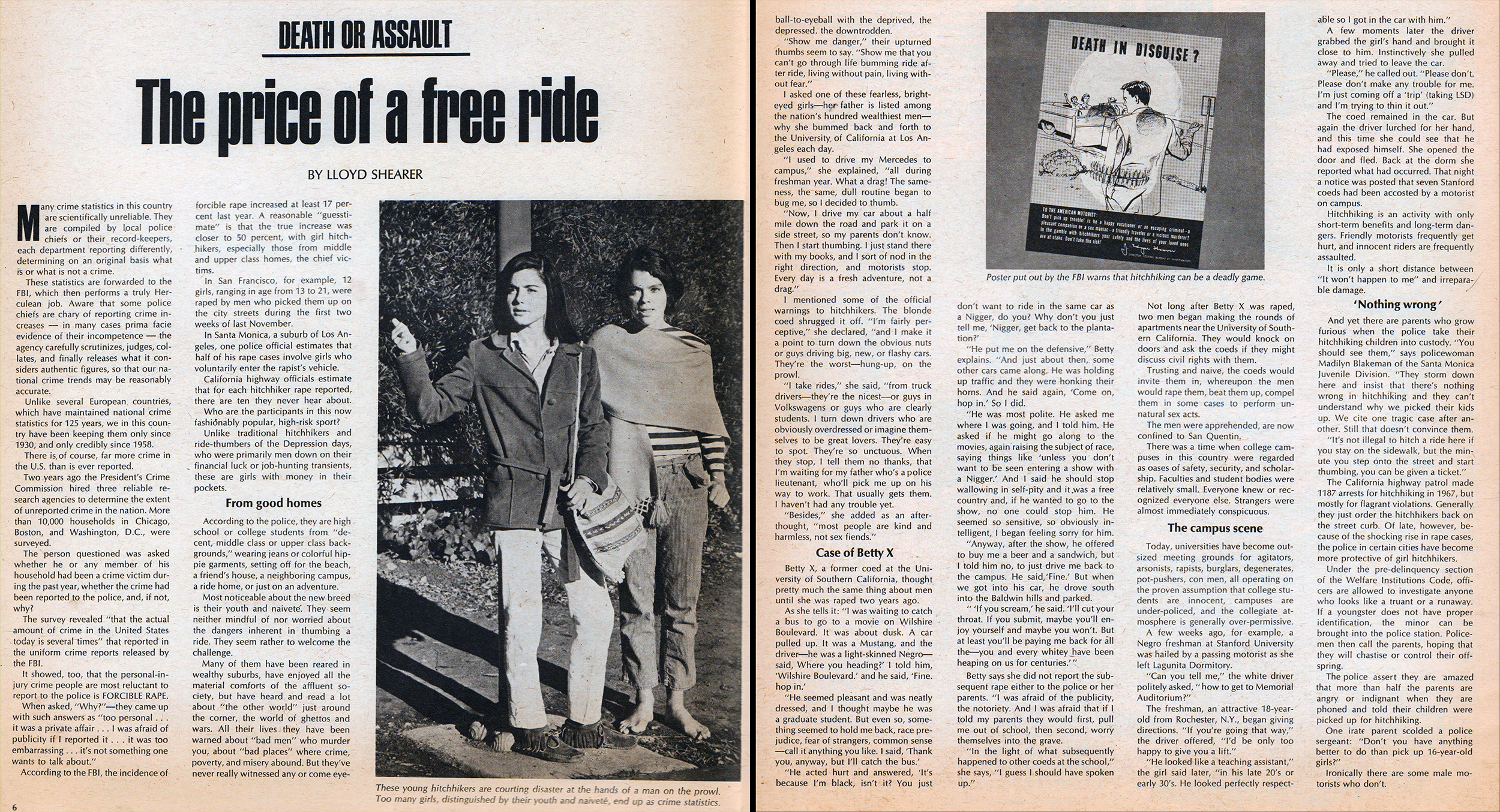
Of course, pop culture didn’t do much to dispel the allure of fun and adventure in hitchhiking. Here are a few

1979 Triumph TR7 ad
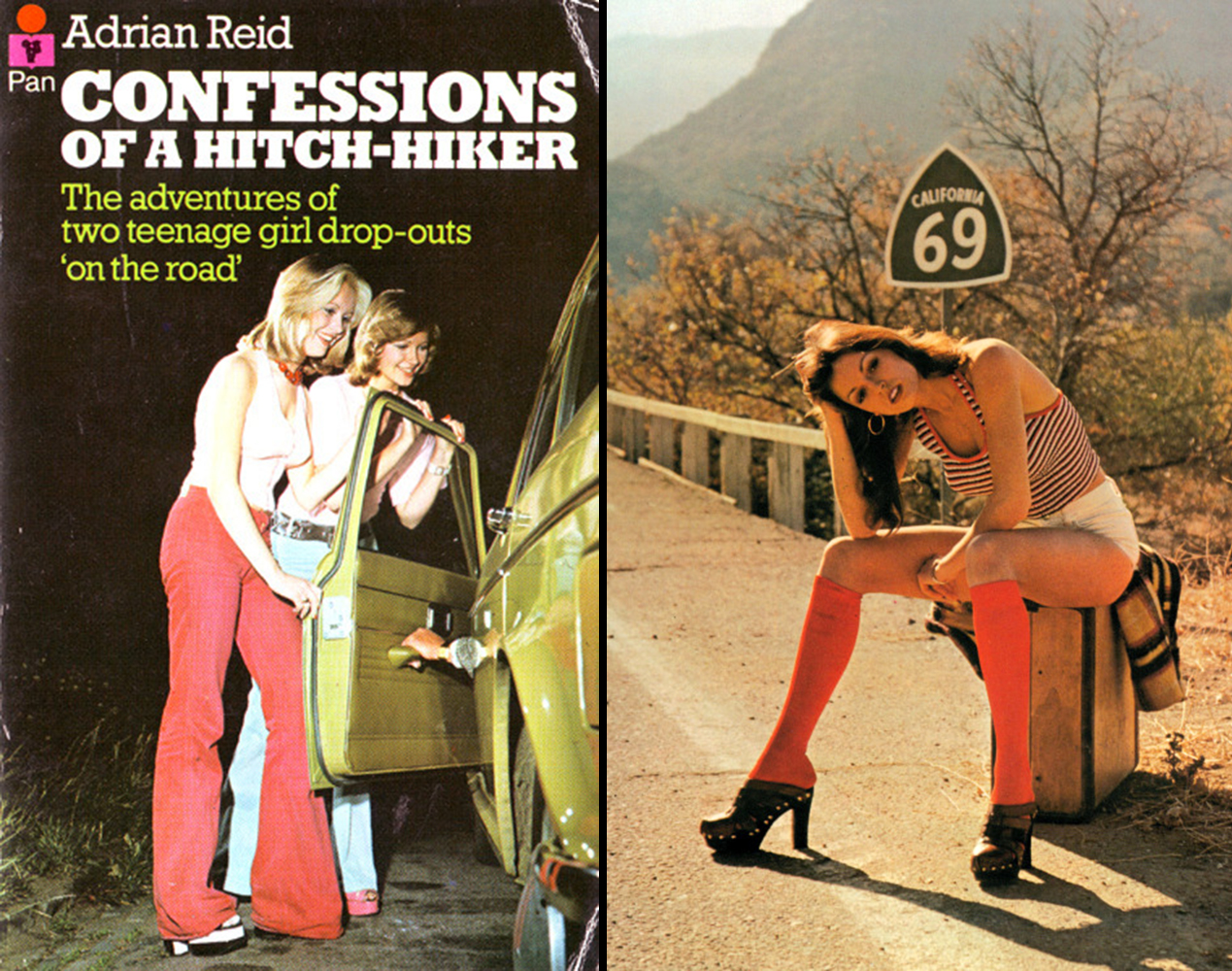
A couple album covers from the period:

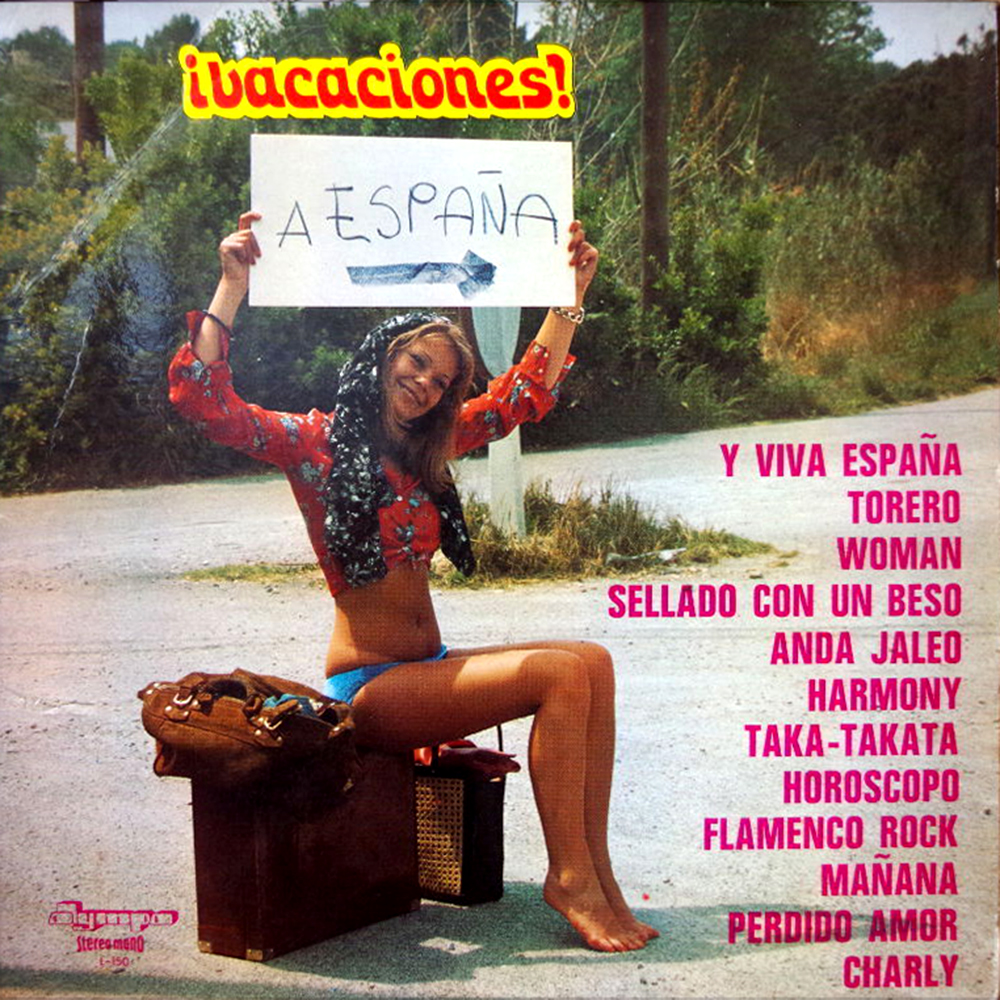
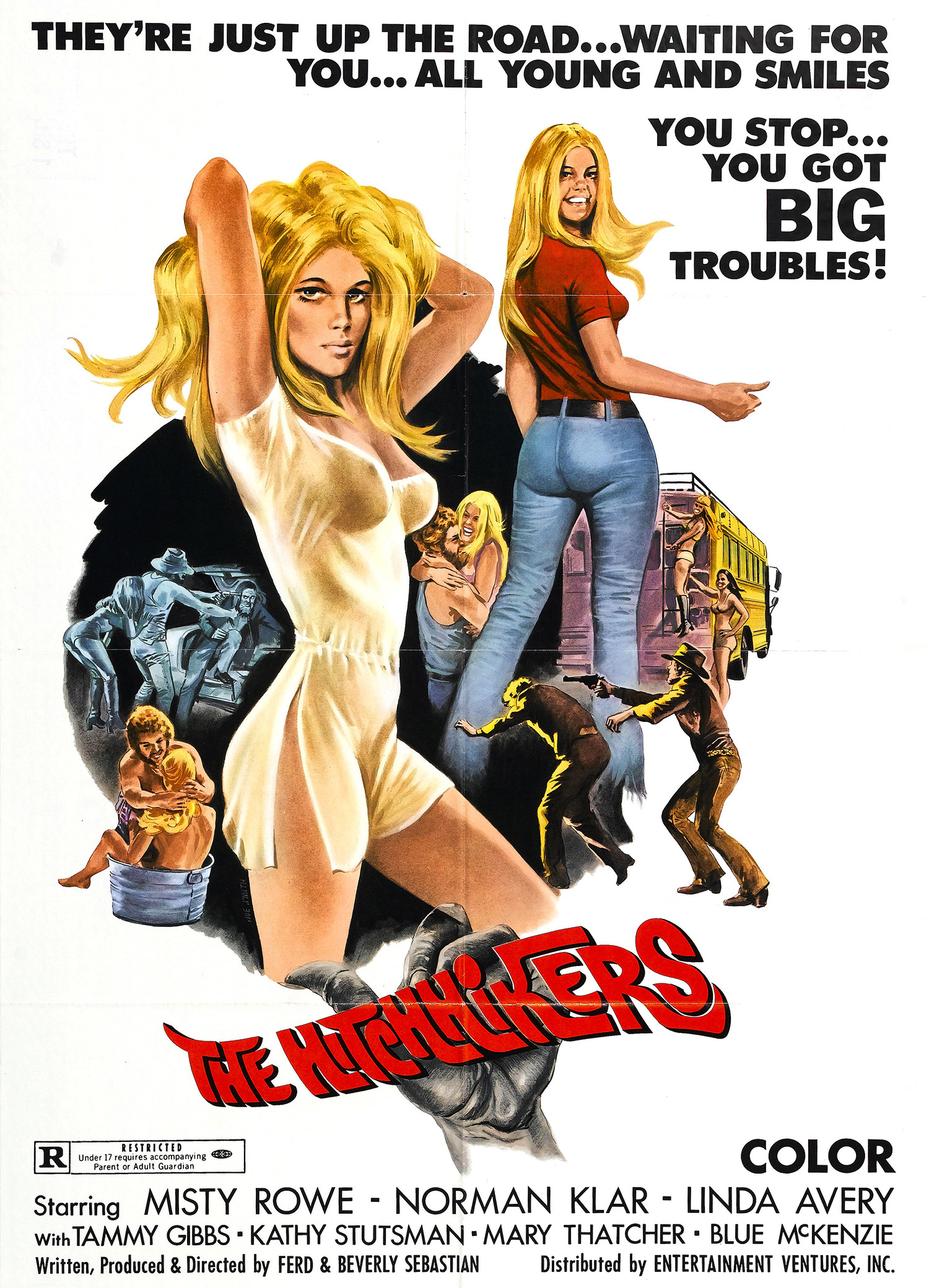
The Hitchhikers (1972)
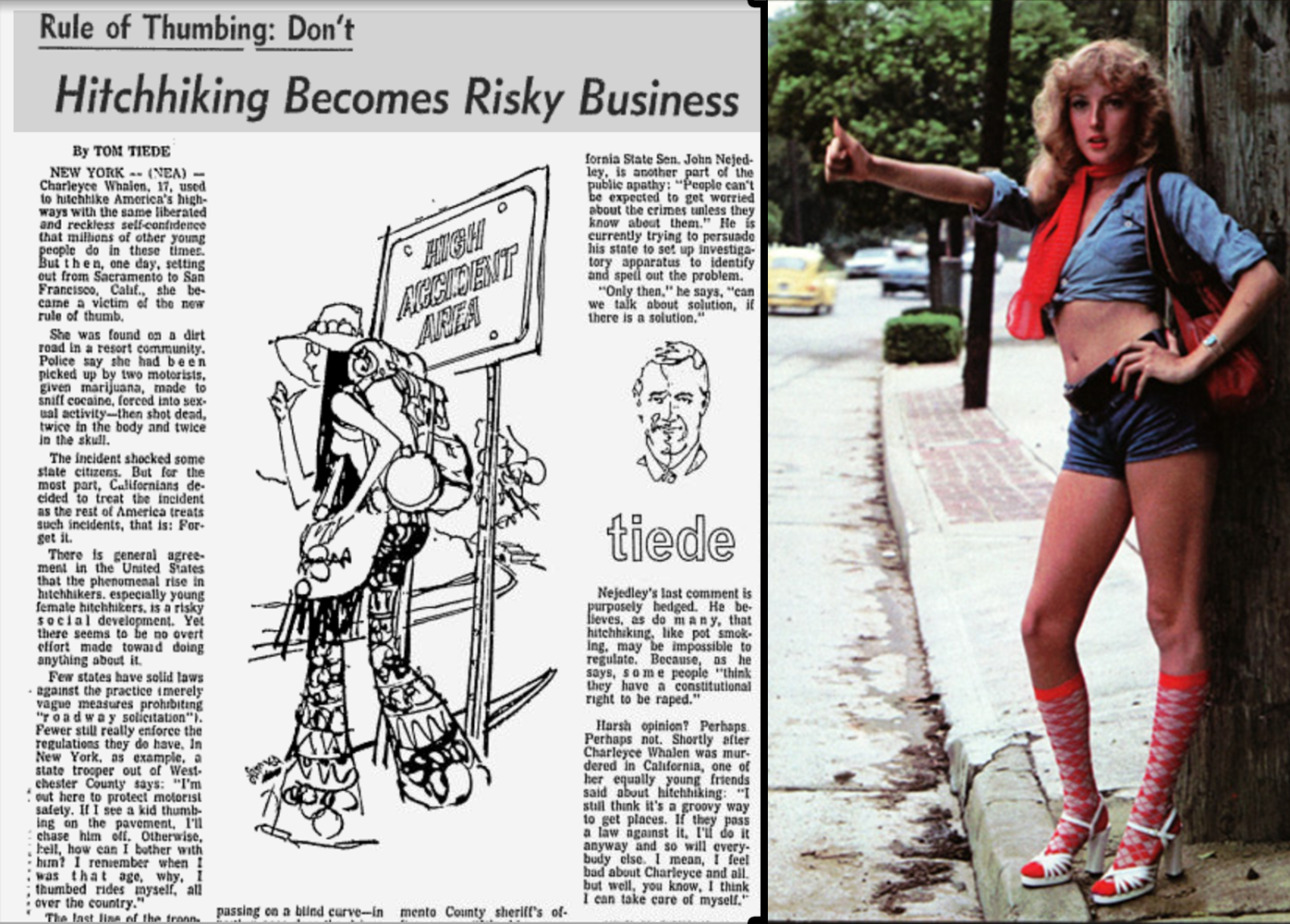
From a 1971 article (Ocala Star-Banner, June 7, 1971) titled “Rule of Thumbing: Don’t. Hitchhiking Becomes Risky Business” by Tom Tiede:
There is a general agreement in the United States that the phenomenal rise in hitchhikers, especially young female hitchhikers is a risky social development. Yet there seems to be no overt effort made toward doing anything about it.
Hitchhiking is nothing new in the country. For years many millions have participated. It became, in fact, a necessary vogue in the Depression, and grew even larger in the days following World War II when home-going GIs strung out along every road in the land. In such times, actually the practice was not only condoned by considered patriotic. There were campaigns to “Give a guy a ride”. And the hiker-motorist relationship was healthily practical.
The healthy ramifications faded fast, however. And in the 1950s and 60s, everybody from the FBI to the auto insurance industry squared off against highway solicitation. Thinking then of the motorist, FBI chief J. Edgar Hoover said giving somebody a ride was “Like passing on a blind curve – in neither case does the driver know what’s ahead.”
And yet, today, with hitchhiking possibly at a zenith, concern over it seems at the nadir. Police and insurance people still lazily warn motorists about the risks, but nobody is apparently worrying about the risk to the hiker himself.
Obviously, the hiker’s risk is enormous. As a spokesman for Connecticut’s state police force puts it: “There is nothing to stop a guy from working over any 14-or-15 year-old girl he picks up.”
As a deputy at the Sacramento County Sheriff’s office says: “It’s like open season for every pervert, homosexual and creep in the area.” And as a New York City juvenile officer adds: “Any girl on the road, she’s asking for trouble because any guy driving by thinks she’s loose.”
[California State Senator John Nejedley] is currently trying to persuade his state to set up investigatory apparatus to identify and spell out the problem. “Only then,” he says, “can we talk about the solution, if there is a solution.” He believes, as do many, that hitchhiking, like pot smoking, may be impossible to regulate. Because, as he says, some people “think they have a constitutional right to be raped.”
Harsh opinion? Perhaps. Perhaps not. Shortly after Charleyce Whalen was murdered in California, one of her equally young friends said about hitchhiking: “I still think it’s a groovy way to get places. If they pass a law against it, I’ll do it anyway and so will everybody else. I mean, I feel bad about Charleyce and all, but well, you know, I think I can take care of myself.”
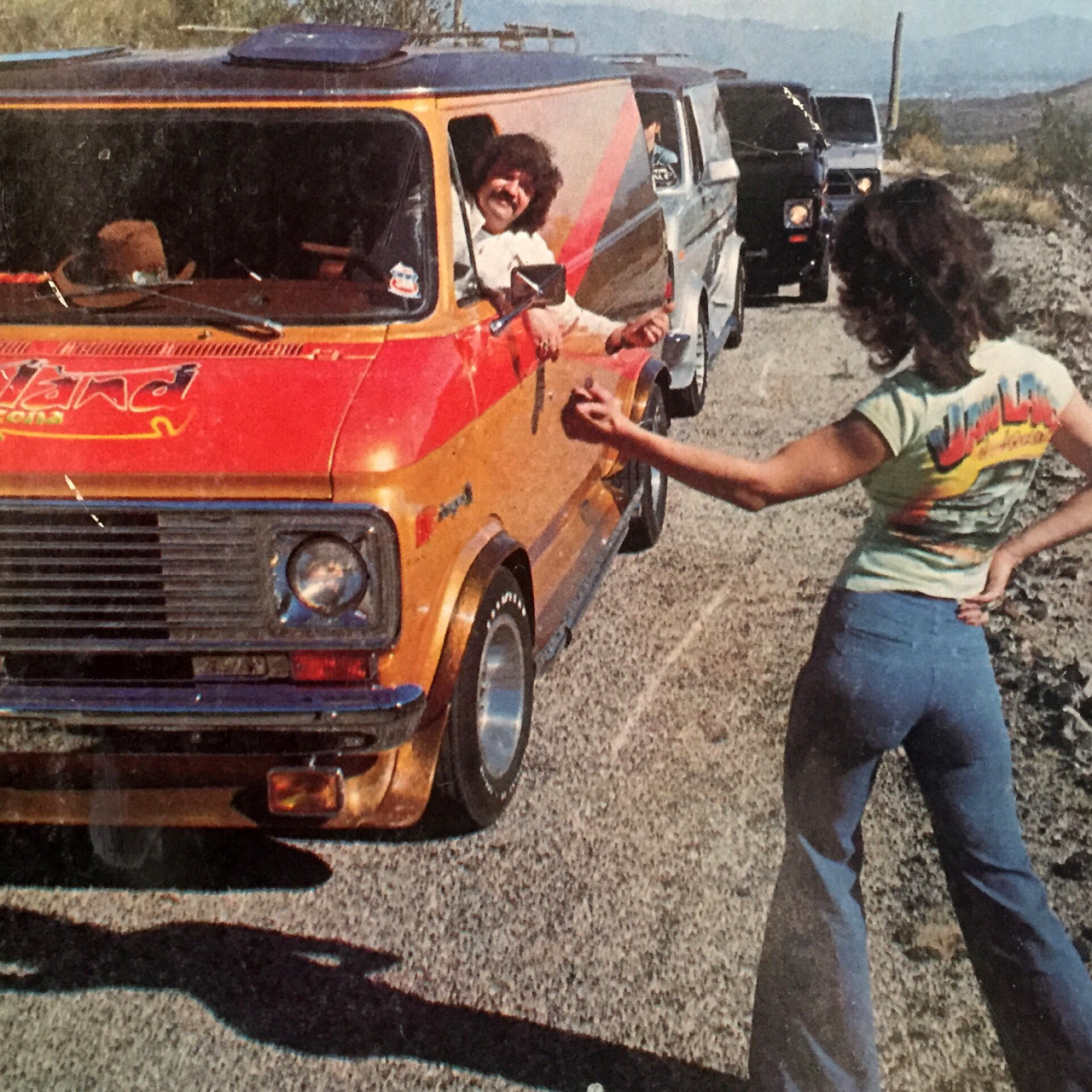
Finally, by the late seventies it became abundantly clear that hitchhiking was not the best means of transportation for ladies. Thanks to TV movies (below) and a barrage of news stories featuring the horror show that awaits women hitching a ride, the fad ended. It’s a sad statement on our society that a lady can’t expect safe transport, but it is the world we live in. (sigh)
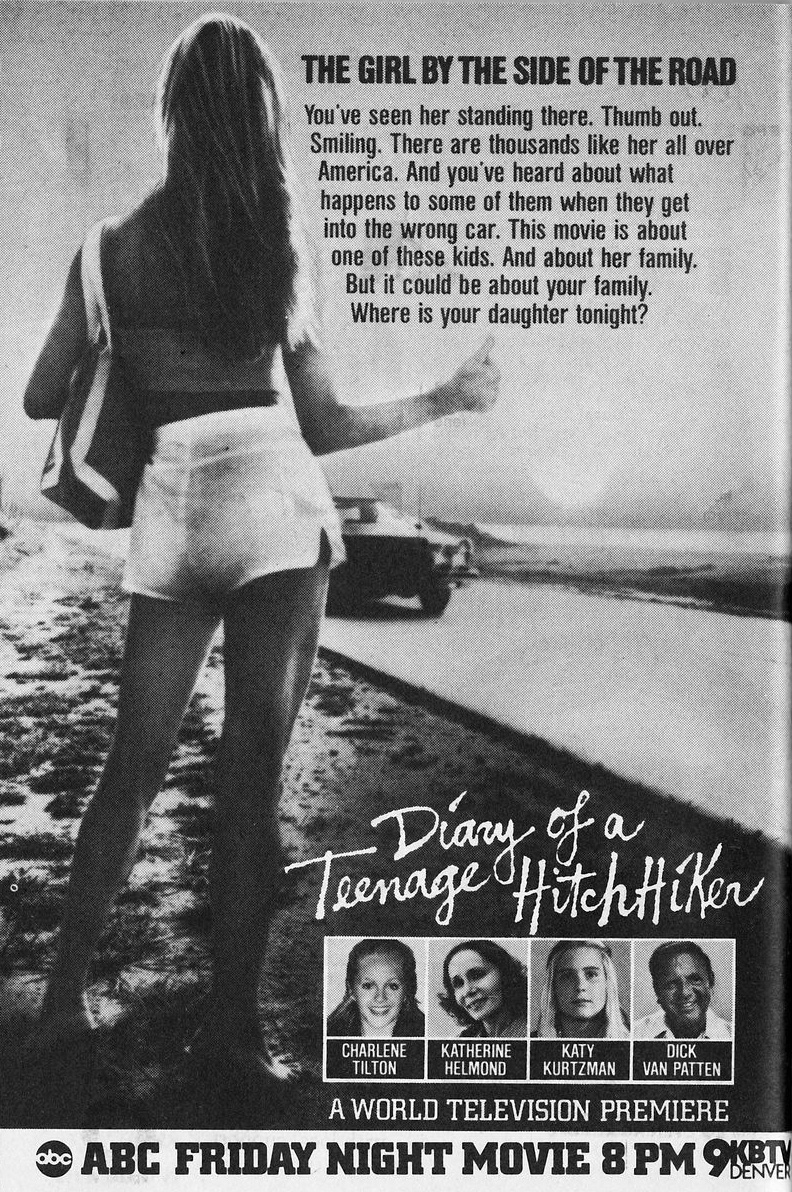
Would you like to support Flashbak?
Please consider making a donation to our site. We don't want to rely on ads to bring you the best of visual culture. You can also support us by signing up to our Mailing List. And you can also follow us on Facebook, Instagram and Twitter. For great art and culture delivered to your door, visit our shop.
